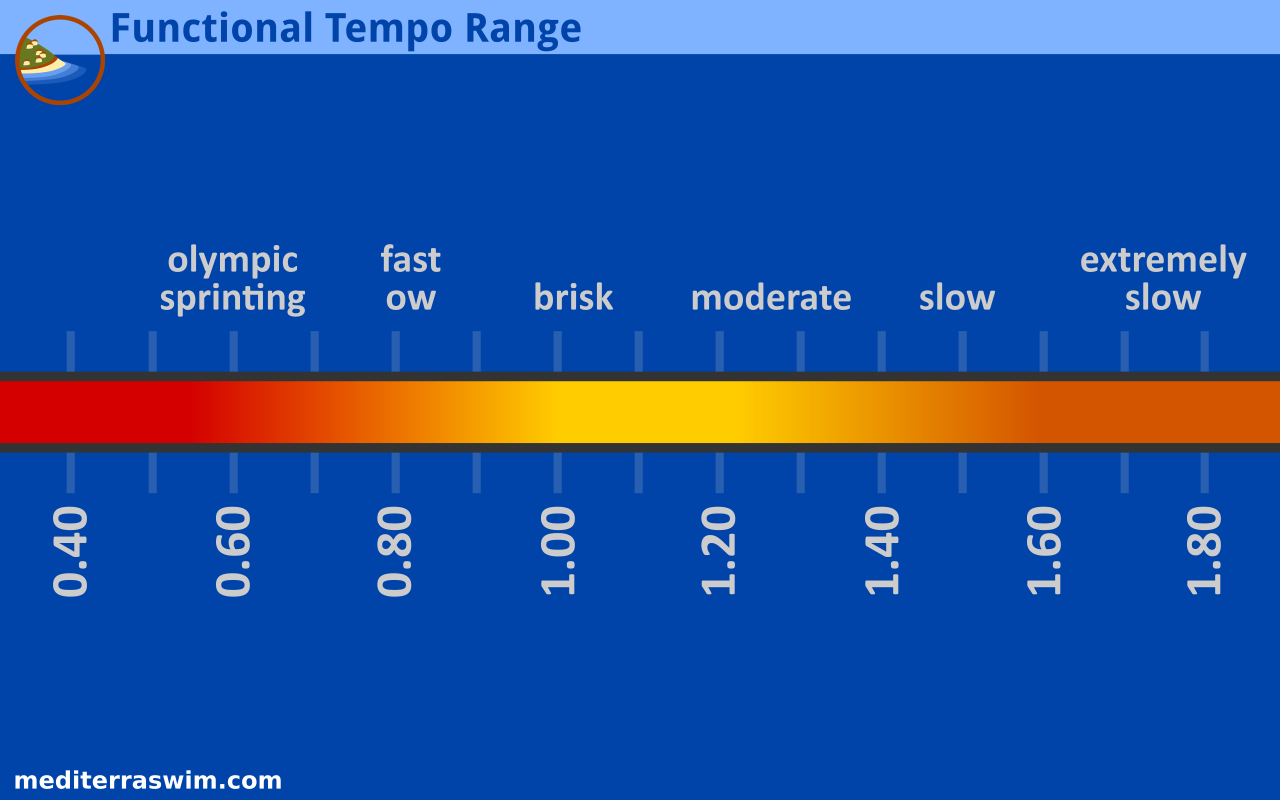How Can We Help?
What is a Functional Range of Tempo?
Tempo is the term we use to talk about the rate at which the arms are moving through the stroke cycle. This is measured in seconds per stroke. The Tempo Trainer Pro gives us a little BEEP at this seconds interval so we know when to time each stroke.
Everyone, without even thinking about it, will start swimming and move the arms at some rate which is ‘normal’ to that person. But once you have learned a little about the role of tempo in the stroke will eventually wonder what tempo should I use?
You first need to learn to be in control of your stroke length. Then you can add training for tempo to it. But, assuming you are ready for it, here is a fuzzy scale on which to see where your current tempo range is, and what direction it may need to shift, depending on what event you are training for.

If you are currently working within the 1.00 to 1.40 second range, this is good range for a lot of swimming purposes.
If you are training with tempos below (faster than) 1.00 then it might be suitable to the kind of event and speed you are training for, or it might be an indication that you have an inadequate stroke length and should instead, slow tempo, and first learn to lengthen your stroke.
If you are training with tempos above (slower than) 1.40 then it may be suitable to doing slow, careful drill work and learning new movement patterns. But this is getting into the range where the density of water makes you slow down too much on each stroke, either requiring much more force-per-stroke to re-accelerate, or your stroke pressure is too light and you do not ever gain momentum in your movements.
The lesson is this: it is inefficient to swim with tempo on either extreme, though there may be good reasons for temporarily training in those tempos.
Also, keep in mind that tempo is meaningless without a relationship to stroke length. One could always jump in the water, spin the arms really fast and go nowhere. There must be traction on each stroke – the body must slide forward consistently on each stroke, no matter how fast those arms spin. And this is why we train first for controlling stroke length, then add tempo training next.
If you are in one of those extremes, the good news is that, when you follow an adaptation process (as provided in many of our Dojo courses) it is relatively easy to adjust your comfortable tempo range when moving it toward that middle zone.
